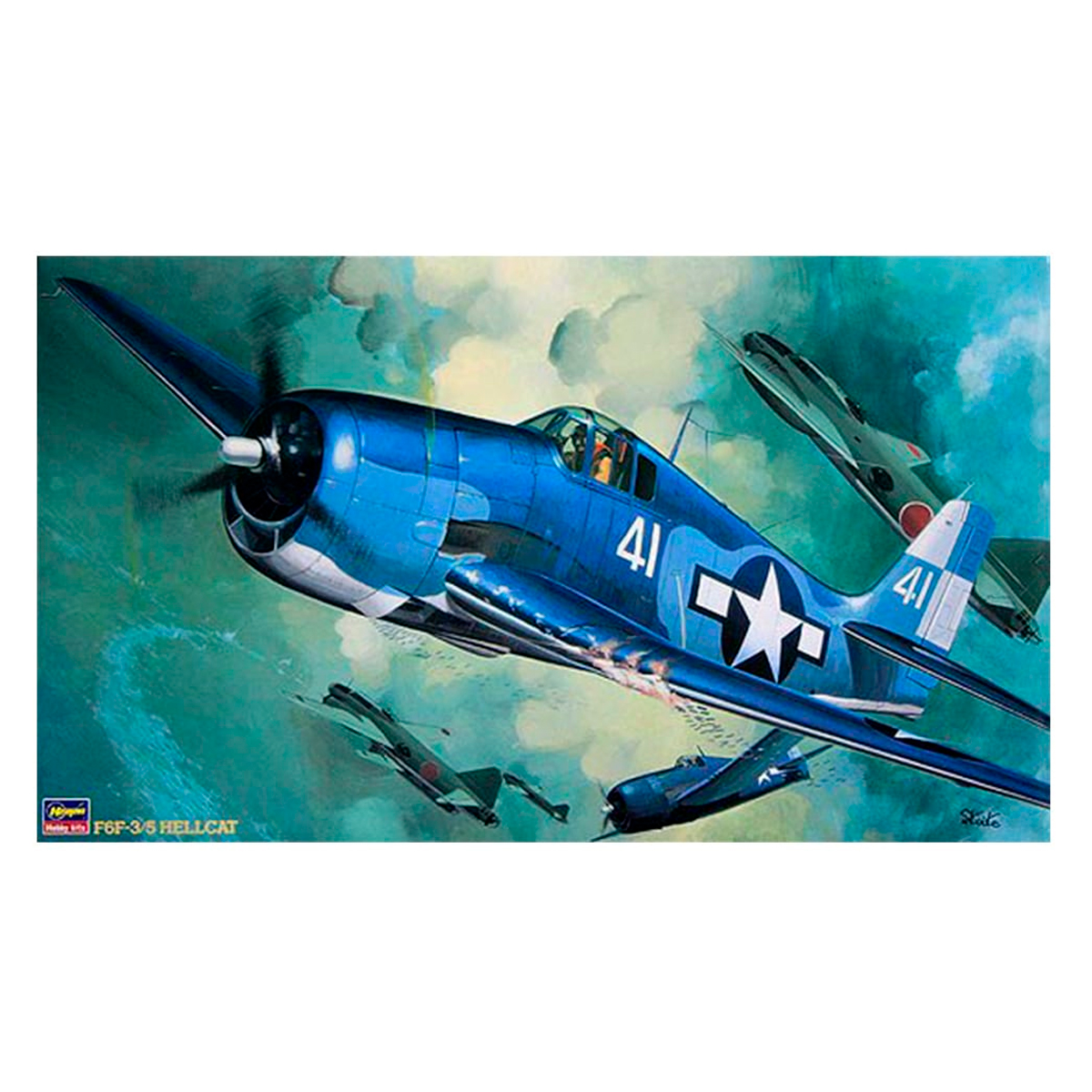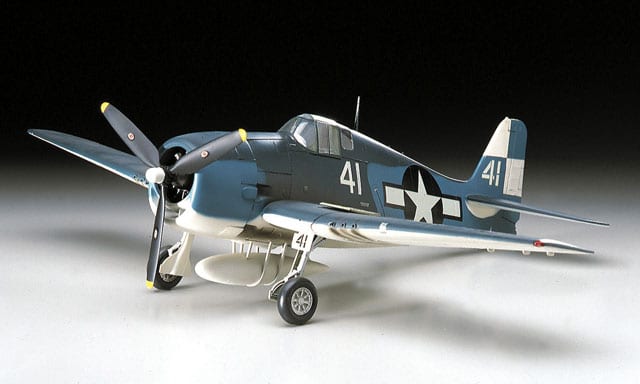ST7 – 1/32 F6F-3/5 HELLCAT
33,95€
Only 1 left in stock

*Please check our Privacy Policies to see how to we use your personal data.
*Por favor revisa nuestra Política de Privacidad para ver como tratamos tus datos personales
Scale … 1:32
Part number ……… ST7
The F6F Hellcat is a fighter launched by the prestigious carrier-capable fighter Grumman as a successor to the F4F Wildcat, and is the main aircraft of the US Navy in the latter half of World War II, along with the F4U Corsair.
On June 30, 1941, a prototype order for the XF6F-1 was issued, and the
XF6F-3 flew for the first time in June 1942.
However, this aircraft lacked horsepower and was not satisfactory in terms of performance, so I
immediately replaced the engine with a powerful P & W R-2800 double wasp.
Delivery of mass-produced aircraft began in November 1942, and as early as January 1943, the first F6F unit VF-9 was formed , and training began on the aircraft carrier Essex as the top batter to overthrow the Zero fighter .
By 1943, 2,545 F6F-3s had been delivered, 252 were lent to the United Kingdom under a loan agreement , assigned to the British Fleet Mobile Task Force from July 1943, and participated in combat in December.
The department engaged in operations against Japan in the Indian Ocean area.
The F6F-5 is equipped with the same R-2800-10W engine as the F6F-3 late production type, but the
engine cowling, windshield, aileron, tail circumference, etc. are slightly redesigned production type.
There is also no rear view window behind the movable windshield.
In addition, bulletproof equipment has been strengthened.
The F6F has a large body for the output of the engine, is heavy, and was not a masterpiece in terms of performance, but it is sturdy and has good mobility, and it has excellent bulletproof equipment, and it can withstand bullets well and has a wear rate. is and it was small, and the multi-of the amount of the total production number 12,272 aircraft, further Japan is fortunate to’ve taken time to the development of the zero Fighter successor, he left the spectacular Senreki more than ability.
《Actual machine data》 (F6F-5)
Crew: 1 person
Overall width: 13.06m Overall
length : 10.23m
Overall height: 4.9m
Wing area: 31m2
Engine: P & W R-2800-10W
Lifting output: 2,100 horsepower
Cruising distance: 1,750km
Maximum speed : 594km / h (elevation 7,300m)
Armed: 12.7mm machine gun x 6 or 20mm machine gun x 2 + 12.7mm machine gun x 4, bomb 450kg x 2
Escala … 1:32
Número de pieza ……… ST7
El F6F Hellcat es un caza lanzado por el prestigioso caza con capacidad para portaaviones Grumman como sucesor del F4F Wildcat, y es el avión principal de la Armada de los EE. UU. En la segunda mitad de la Segunda Guerra Mundial, junto con el F4U Corsair.
El 30 de junio de 1941, se emitió un pedido de prototipo para el XF6F-1, y el
El XF6F-3 voló por primera vez en junio de 1942.
Sin embargo, este avión carecía de caballos de fuerza y no era satisfactorio en términos de rendimiento, por lo que
Reemplazó inmediatamente el motor con una potente avispa doble P & W R-2800.
La entrega de aviones producidos en masa comenzó en noviembre de 1942, y ya en enero de 1943, se formó la primera unidad F6F VF-9, y comenzó el entrenamiento en el portaaviones Essex como el mejor bateador para derrocar al caza Zero.
En 1943, se habían entregado 2.545 F6F-3, se prestaron 252 al Reino Unido en virtud de un contrato de préstamo, se asignaron a la Fuerza de Tarea Móvil de la Flota Británica desde julio de 1943 y participaron en el combate en diciembre.
El departamento participó en operaciones contra Japón en el área del Océano Índico.
El F6F-5 está equipado con el mismo motor R-2800-10W que el modelo de producción tardía F6F-3, pero el
la capota del motor, el parabrisas, el alerón, la circunferencia de la cola, etc. son del tipo de producción ligeramente rediseñado.
Tampoco hay ventana de visión trasera detrás del parabrisas móvil.
Además, se ha reforzado el equipamiento antibalas.
El F6F tiene un cuerpo grande para la potencia del motor, es pesado y no fue una obra maestra en términos de rendimiento, pero es robusto y tiene buena movilidad, y tiene un excelente equipo a prueba de balas, y puede resistir bien las balas y tiene una tasa de desgaste. Es y era pequeño, y la cantidad de aviones de producción total de 12,272, además, Japón tiene la suerte de haberse tomado el tiempo para el desarrollo del sucesor del Zero Fighter, dejó al espectacular Senreki más que habilidad.
《Datos de máquina reales》 (F6F-5)
Tripulación: 1 persona
Ancho total: 13,06 m en total
longitud: 10.23m
Altura total: 4,9 m
Superficie alar: 31m2
Motor: P & W R-2800-10W
Potencia de elevación: 2,100 caballos de fuerza
Distancia de crucero: 1.750 km
Velocidad máxima: 594 km / h (elevación 7.300 m)
Armado: ametralladora de 12,7 mm x 6 o ametralladora de 20 mm x 2 + ametralladora de 12,7 mm x 4, bomba de 450 kg x 2





 Request of SDS product data file / Product security
Request of SDS product data file / Product security